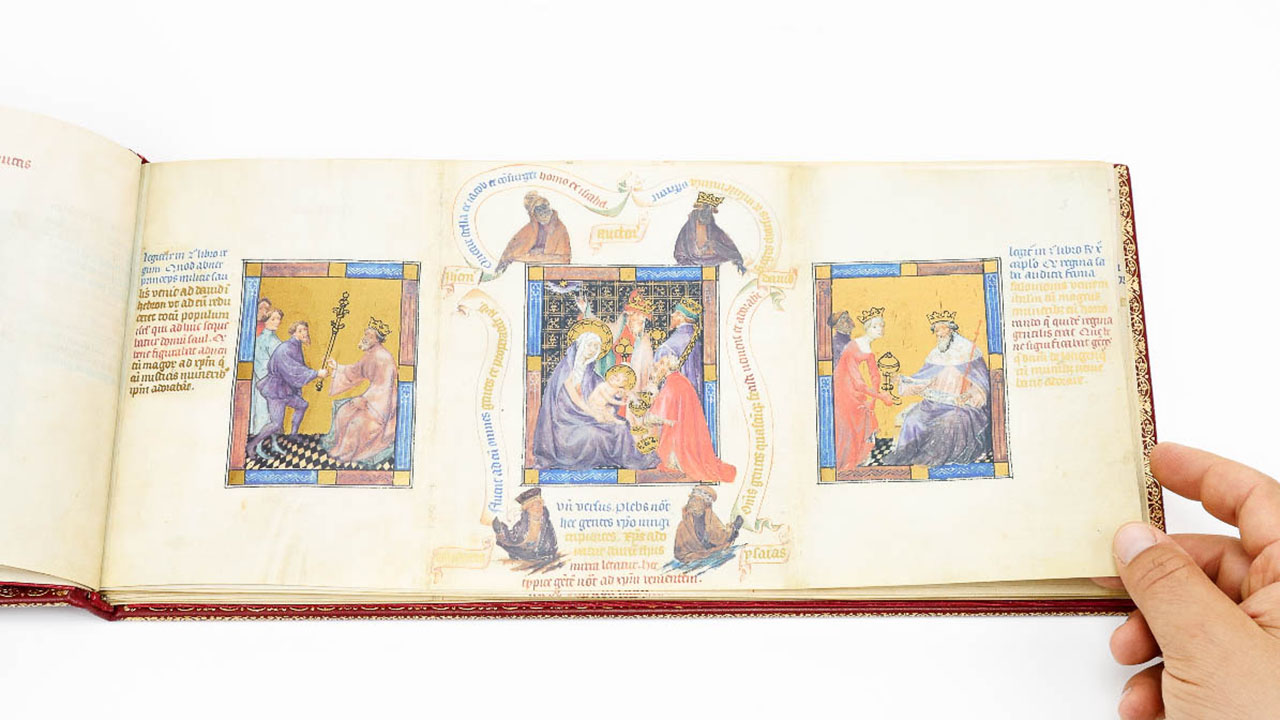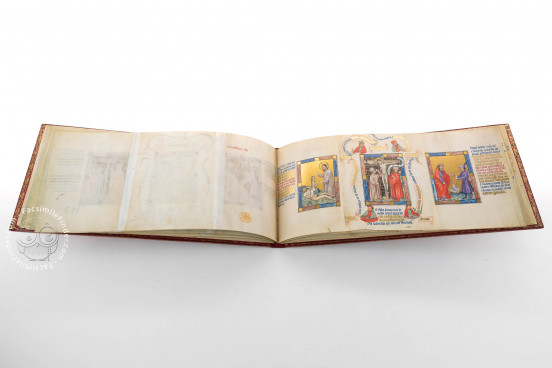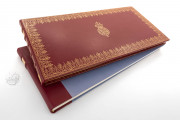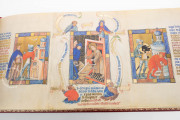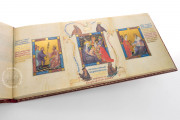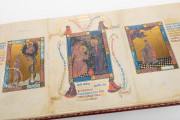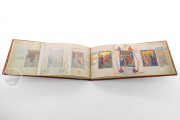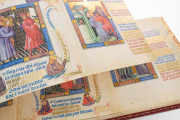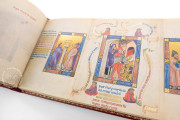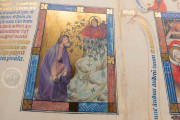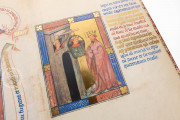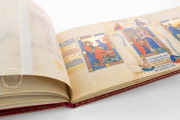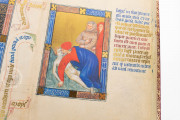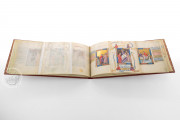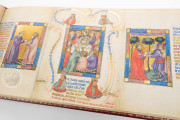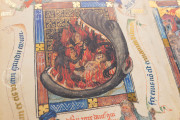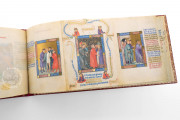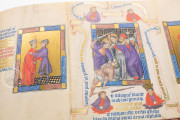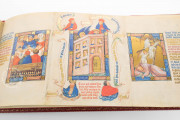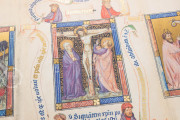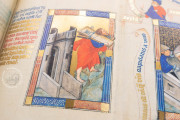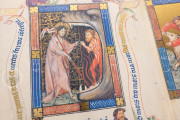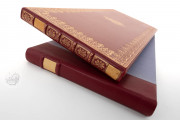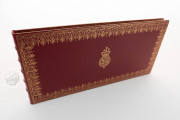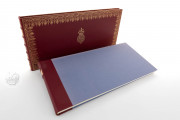Produced in the northern Netherlands, possibly at The Hague, at the end of the fourteenth century, the Golden Picture Bible is a picture book in a unique format, with its parchment sheets originally folded in thirds and sewn along the fold between the first and second panels. It presents the Christian understanding of people and events of the Old Testament as prefigurations of events described in the New Testament. It boasts ninety-three miniatures attributed to the Master of the Hours of Margaret of Cleves in jewel-like colors, with backgrounds incorporating gold, arranged three to a page.
The imagery is on one side of each sheet. The central miniature depicts a scene from the New Testament, while the two flanking scenes show events from the Old Testament. The relationship among the three is explained in Latin verse under the central image.
A Painter in Demand at Court
The Master of the Hours of Margaret of Cleves is named for a book of hours (Lisbon, Museu Fundação Calouste Gulbenkian, MS LA 148) made for Margaret of Cleves (d. 1411), the second wife of Albrecht I, Duke of Bavaria and Count of Holland, Zeeland, and Hainaut (1336-1404). He created narrative vivacity in his biblical scenes by incorporating everyday details, such as the vessel hanging from an iron hook in front of a towel in the scene of Christ before Pilate (fol. 13r).
His work is also marked by elements of the action extending beyond the painted frames of the miniatures. Dramatic examples are the flowing outer garment of the kneeling magus in the Adoration of the Magi and the raised sword of Joab in the scene of the Murder of Ahab (fols. 3r and 13r).
An Original Design
The master seems to have devised the Picture Bible's scenes specifically for this project. Instructions for their subjects in Dutch are written in a small cursive script either under the images or on the reverse of the sheet.
A Sophisticated Design
Each New Testament scene has a background of repeating gold geometric designs on a colored ground. The Old Testament scenes have solid gold leaf grounds. Each New Testament scene is surrounded by busts of four Old Testament prophets or kings holding scrolls inscribed with their words. Prose descriptions of the depicted episodes accompany the Old Testament scenes.
Multi-Colored Script
The writing—in gold, blue, and red inks—uses the formal book script of the period, Gothic Textualis, the colored writing contributing to the sumptuousness of the pages' appearance. Each New Testament scene is identified on the reverse of the left-hand Old Testament scene. When the sheets were bound in thirds, these acted as rubrics that announced the theme of the page to be unfolded.
From the Library of George III
The book may have been created for Margaret of Cleves: if not for her, it was probably made for a member of the court of Holland. One Alexander Radclyff owned the book in the sixteenth century. It later found a place in the library of George III (1738-1820), King of Great Britain, when it was bound in its current gold-tooled red leather binding. George's son, George IV (1762-1830), King of Great Britain, donated his father's library to the British Museum in 1823 as the King's Library, which was transferred to the British Library in 1973.
We have 1 facsimile edition of the manuscript "Golden Picture Bible": Goldene Bilderbibel "Biblia Pauperum" facsimile edition, published by Faksimile Verlag, 1994
Request Info / Price
